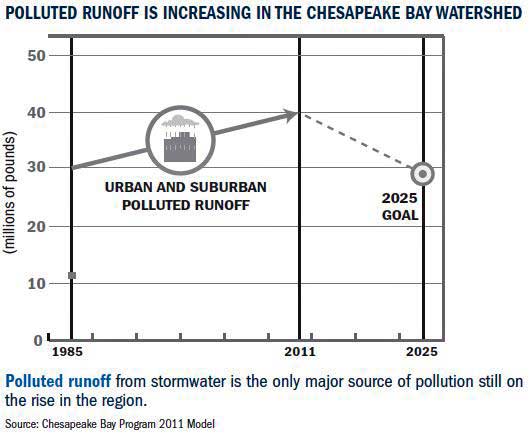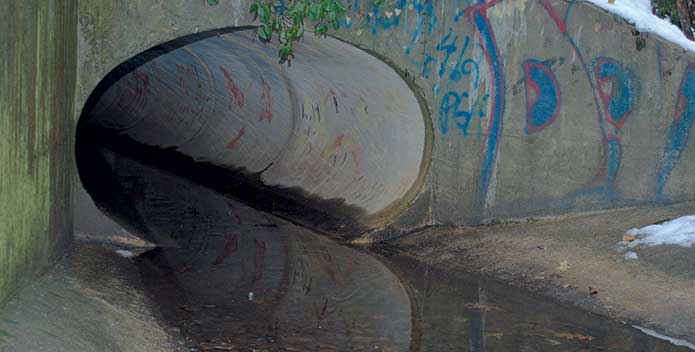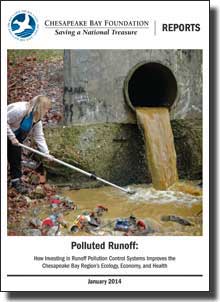Just one inch of rain falling on one acre of paved surface equals 27,000 gallons of polluted runoff.
Download CBF's Polluted Runoff Report [pdf]
Over the last quarter century, cooperation between governments, businesses, and individuals has reduced many forms of pollution in the Chesapeake Bay and its tributaries. And right now—a critical moment in time for the Chesapeake Bay and its rivers and streams—a federal and state Clean Water Blueprint is in place to finish the job. One major type of nitrogen pollution, however, continues to grow: untreated suburban and urban stormwater runoff from blacktop, roofs, and other hardened surfaces.
Every year, development spreads across an additional 38,000 acres of land in the Chesapeake Bay region. Thus, every four years, an area of land about the size of Washington, D.C. (nearly 40,000 acres), is converted from fields and forests to buildings, roads, and parking lots—the hardened landscape of suburban sprawl. When runoff from storms sweeps across this blacktop, it blasts into streams, erodes stream banks, kills fish and insects, floods homes, and poses risks to human health.
This report details the problems created by suburban and urban runoff pollution. And it offers steps that local, state, and federal governments can take to reduce pollution and achieve clean water for local streams, rivers, and the Chesapeake Bay.
 |
In the Mid-Atlantic region, suburban and urban runoff is responsible for thousands of miles of waterways that are so polluted they are legally "impaired" under the federal Clean Water Act. This includes 2,451 miles of rivers and streams in Pennsylvania and 2,590 miles in Maryland (with Virginia's numbers not available).
Polluted runoff is the leading known cause of high bacteria levels that trigger beach closings and no-swimming advisories, as well as bans and restrictions on harvesting oysters and other shellfish.
Locally, flooding causes an estimated $150 million a year in damage in the Susquehanna River drainage area alone.
How can runoff be controlled? The federal Clean Water Act's main enforcement tools for limiting runoff pollution are permits for large counties and cities. But at this writing, most of these permits in the Chesapeake Bay region are outdated (meaning more than five years old) and have been administratively continued pending new ones. As a result, the permits still have old and weak requirements. Outdated permits are a problem for 10 out of 11 of Virginia's largest municipalities, and nine of 10 of Maryland's largest local governments. Pennsylvania's communities in the Bay region, like many smaller towns and counties in Virginia and Maryland, are covered by a different kind of permit that has less specific water pollution control requirements.
Maryland and Virginia's environmental agencies have pledged to update and strengthen the permits for large counties and cities in 2014 to help meet pollution limits for the Chesapeake Bay. Stronger runoff permits will help the states implement the Chesapeake Clean Water Blueprint, to reduce pollution from all sources, and clean up local streams.
Local governments can build cost-effective, common-sense projects including modified ponds and ditches with wetland plants to catch and filter runoff, planting trees, and leaving more land open to absorb rainwater. Cost estimates for reducing runoff pollution often drop substantially when more efficient and updated methods are considered. And runoff pollution control fees and projects can bring a return to local economies of up to 1.7 times the investment, according to a report by the University of Maryland Environmental Finance Center.
Download Polluted Runoff: How Investing in Runoff Pollution Control Systems Improves the Chesapeake Bay Region's Ecology, Economy, and Health [pdf]




